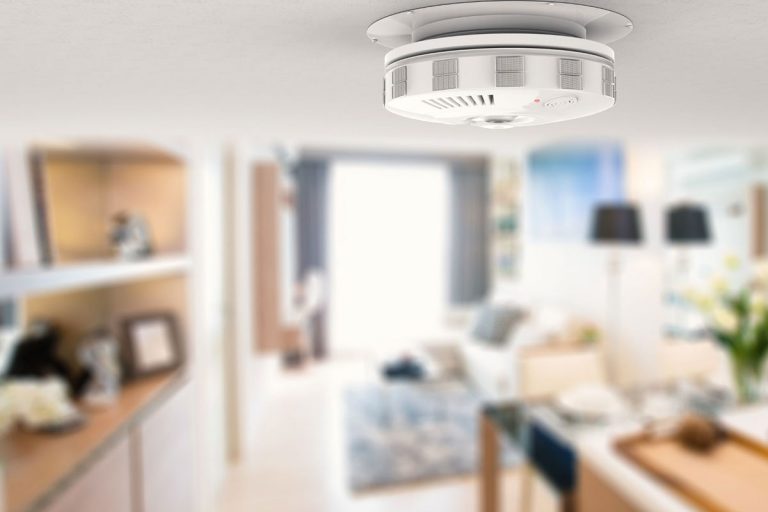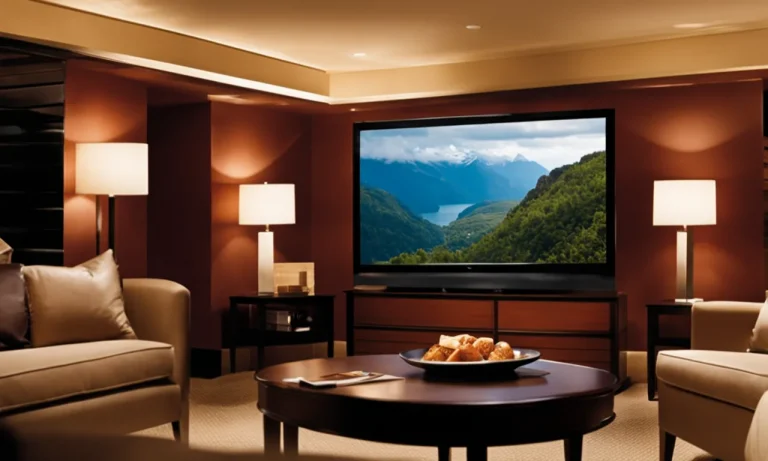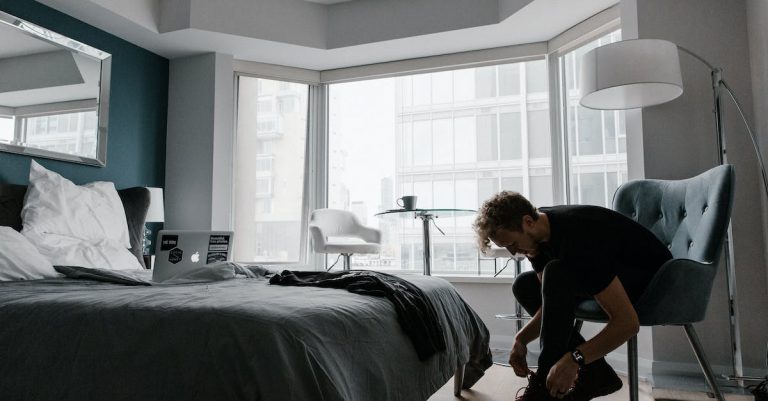When booking a hotel, room size is an important factor – but square footage can be hard to visualize from photos alone. If you’ve ever wondered just how big the average hotel room is, you’re not alone.
The short answer is most hotel rooms range from 250-500 square feet. But size varies significantly by hotel class, room type, and other amenities.
Standard Room Sizes by Hotel Class
Budget/Economy Hotels: ~250 sq ft
When it comes to budget and economy hotels, the average room size typically falls around 250 square feet. These hotels are designed to provide affordable accommodations for travelers who are looking for basic amenities and a comfortable place to rest.
While the room size may be smaller compared to higher-end hotels, budget hotels often make the most out of the available space by utilizing efficient layouts and clever storage solutions.
- Rooms usually have just a bed, TV, small bathroom. Some may offer mini-fridges, microwaves, wifi, but amenities are limited.
- Locations tend to be along highways, near airports or on the outskirts of downtown areas rather than central locations.
- Rates are typically $50-100 per night depending on location. Discount chains can charge as low as $30-60 per night for a room.
- Some common brands in the U.S. include Motel 6, Super 8, Days Inn, EconoLodge, Red Roof Inn, La Quinta Inn.
- Travelers staying at budget hotels are usually looking for the cheapest option that is clean and safe over luxury. Things like free parking and breakfast can be big perks.
So in summary – small, basic rooms and amenities offset by very affordable nightly rates. Budget hotels offer no frills accommodation for thrifty travelers.
Mid-Range Hotels: 300-400 sq ft
Mid-range hotels offer a slightly larger room size range, typically between 300 and 400 square feet. These hotels cater to travelers who are willing to spend a bit more for additional comfort and amenities.
With more space available, mid-range hotels often provide extra features such as a small seating area, a work desk, or a mini-fridge. This allows guests to have a more relaxing and convenient stay while still staying within a reasonable budget.
- Layouts include one or two beds, a sitting area with chairs and a table, bathroom, mini-fridge, microwave, coffee maker, and flat screen TV.
- Many mid-range hotels are branded chains like Courtyard by Marriott, Hilton Garden Inn, Hyatt Place, Holiday Inn Express. They offer consistent, moderately-priced accommodation.
- On-site amenities often include a fitness center, restaurant or cafe, business center, laundry facilities, sometimes an indoor pool and hot tub.
- Locations are generally convenient but not at the center of major tourist sites. They may be near highways, office parks or suburbs.
- Nightly rates typically range from $100-250 per night depending on location and season. Mid-week and off-peak rates tend to be cheaper.
- Travelers staying in mid-range hotels often include business travelers, families, groups looking for affordable but comfortable lodging.
- Loyalty programs and benefits for frequent travelers are common at branded mid-range hotel chains.
So in summary, mid-range hotel rooms offer full amenities and more space than budget hotels for moderate nightly rates in convenient locations.
Upscale Hotels: 350-500 sq ft
Upscale hotels, known for their luxurious accommodations, offer room sizes ranging from 350 to 500 square feet. These hotels provide a higher level of comfort and elegance, with spacious rooms that allow guests to truly unwind. I
n addition to a comfortable sleeping area, upscale hotels often include a separate seating area, a well-appointed bathroom, and upscale amenities. The extra space and added amenities are designed to provide guests with a premium experience during their stay.
- Premium bedding with quality mattresses and linens. Multiple pillows and blankets.
- Tech amenities like bedside touch panels, smart TVs, Bluetooth speakers, high-speed wifi. Multiple charging points.
- Upgraded bathroom with bathtub, luxury toiletries, robes, slippers, and high-end fixtures.
- Sitting areas with comfortable chairs, ottomans, and finely built furniture. Well-designed lighting.
- Mini bar fridge, coffee makers, and refreshments. Some provide minibars.
- Work desk, chair, and lap desk. Business services and printing/copying capabilities.
- Luxury brands like Hilton, Marriott, Hyatt Regency, Westin, Renaissance, Sheraton offer upscale rooms.
- On-site amenities include fitness center, pool, multiple restaurants/bars, room service, and concierge.
- Locations in city centers, close to attractions and transport hubs.
- Nightly rates range from $250-500+ depending on brand and location.
So in summary, upscale hotel rooms focus on space, comfort, amenities, and service for business travelers and higher-end leisure stays.
Luxury Hotels: 450+ sq ft
At the top of the hotel class hierarchy are luxury hotels, where room sizes start at 450 square feet and can go well beyond that. These hotels are renowned for their extravagant accommodations and exceptional service.
In addition to a spacious sleeping area, luxury hotels may include a separate living room, a dining area, a private balcony, or even a personal butler. The goal is to create a lavish and indulgent experience for guests, ensuring their stay is nothing short of extraordinary.
- Very spacious, usually minimum of 450 square feet but often much larger. Suites can be over 1,000 sq ft.
- Luxury bedding – high thread count sheets, down comforters, premium mattresses like Duxiana or Serta.
- High-end furnishings like leather chairs, hardwood furniture, and ornate decor. Original artwork on walls.
- Technology like intuitive lighting controls, integrated sound systems, adjustable mattresses, smart TVs.
- Marble bathrooms with soaking tubs, luxury toiletries, plush robes and slippers. Some have saunas or steam showers.
- Butler service, personalized amenities, packing and unpacking available. Some provide in-room massages.
- 24/7 room service with extensive menus. Mini bar and refreshments included.
- Brands like Ritz-Carlton, Four Seasons, Park Hyatt, St. Regis offer luxury accommodation.
- Resort-style amenities like multiple restaurants, pools, spas, golf courses, tennis courts, etc.
- Prime locations in city centers or highly desirable resort areas.
- Nightly rates typically over $500 per night and can be $1,000+ at top properties.
So in summary, luxury hotel rooms focus on exceptional service, amenities, comfort and prestige for high-end travelers seeking a superb experience.
Also Read: What Hotel Has the Best Beds? A Guide to Finding Your Perfect Night’s Sleep
How Room Types Impact Square Footage
When it comes to hotel room sizes, the type of room you choose can greatly impact the square footage you’ll have at your disposal. Whether you’re looking for a simple basic room, a luxurious suite, or an accessible room, understanding the differences in square footage can help you make the right decision for your needs.
Basic Rooms Tend to be Smaller
Basic hotel rooms are often designed with functionality and affordability in mind. These rooms typically offer the smallest square footage compared to other room types. They are ideal for travelers who are on a budget or simply need a place to rest their heads after a long day of exploring. Basic rooms usually include essential amenities such as a comfortable bed, a small desk, and a bathroom. While they may not provide a lot of space, they still offer everything you need for a comfortable stay.
Suites Offer More Space
If you’re looking for a more spacious hotel room, suites are the way to go. These rooms are often larger in size and offer separate living areas, bedrooms, and sometimes even kitchenettes. Suites are perfect for families or those who enjoy having extra space to relax and unwind. With amenities such as sofas, dining tables, and additional bathrooms, suites provide a home-like atmosphere that can make your stay even more enjoyable.
Also Read: What Hotel Chains Offer 2 Bedroom Suites?
Accessible Rooms Fit Wheelchairs
Hotels also offer accessible rooms that are specifically designed to accommodate individuals with disabilities. These rooms are typically larger in size to ensure there is enough space to maneuver a wheelchair comfortably.
Accessible rooms often feature wider doorways, lower beds, and roll-in showers to cater to the needs of guests with mobility challenges. It’s important to note that accessible rooms are not limited to individuals with disabilities and can be booked by anyone who requires the additional space and amenities.
Amenities that Reduce Square Footage
When it comes to hotel room sizes, there are several amenities that can significantly reduce the overall square footage. While these amenities may enhance your stay and provide added convenience, they do come at the expense of space. Let’s take a closer look at some of the common amenities that can impact the size of a hotel room.
In-Room Bathrooms
One amenity that can take up a significant amount of space in a hotel room is an in-room bathroom. While having a private bathroom is undoubtedly a luxury, it does come with a tradeoff in terms of square footage. In-room bathrooms typically include a toilet, sink, and shower or bathtub. Depending on the hotel, the size of these bathrooms can vary. Some may be more compact, while others may be more spacious.
It’s important to note that the size of the bathroom can also vary based on the room category or price point. Higher-end hotels may offer larger bathrooms with additional features such as double sinks or separate soaking tubs. On the other hand, budget hotels may have smaller bathrooms that prioritize functionality over size.
Kitchenettes and Wet Bars
Another amenity that can impact the size of a hotel room is a kitchenette or wet bar. These features are often included in extended stay hotels or suites to provide guests with the convenience of preparing simple meals or enjoying a drink in the comfort of their room.
A kitchenette typically includes a small refrigerator, microwave, sink, and sometimes a stovetop or hot plate. These compact kitchen areas can significantly reduce the available square footage in a hotel room. However, they can be a great option for guests who prefer the flexibility of preparing their own meals or storing snacks and beverages during their stay.
Similarly, a wet bar is a smaller version of a kitchenette that typically includes a sink, mini-fridge, and space for storing and preparing beverages. While not as comprehensive as a kitchenette, a wet bar can still take up a considerable amount of space, especially in smaller hotel rooms.
Sitting Areas
Many hotel rooms these days include a designated sitting area, which can consist of a sofa, chairs, and a coffee table. This area is designed to provide guests with a comfortable space to relax, work, or socialize. However, having a sitting area means sacrificing some square footage that could have been used for additional bedroom space.
The size of the sitting area can vary depending on the hotel and room category. Some hotels may offer spacious sitting areas with ample seating, while others may have more modest arrangements. Additionally, some hotels may offer rooms with a separate living room area, which further reduces the available space for the bedroom.
Factors that Determine Room Size
When it comes to the size of a hotel room, several factors come into play. These factors influence the overall dimensions and layout of the room, ensuring that it meets the needs and preferences of the guests. Let’s take a closer look at some of the key factors that determine room size:
Building Architecture
The architecture of the hotel building plays a significant role in determining the size of the rooms. The design of the building, including its layout and structure, will ultimately impact the available space for each room. For example, older hotels with historical significance may have smaller rooms due to the limitations of the original design. On the other hand, newer hotels may prioritize spaciousness and incorporate larger rooms into their architectural plans.
Local Zoning Laws
Local zoning laws also have an impact on the size of hotel rooms. These laws vary from one location to another and are put in place to regulate the size and usage of buildings within a specific area. Zoning laws may dictate the maximum square footage allowed for hotel rooms, ensuring that they comply with safety regulations and maintain a certain standard. It’s important for hoteliers to be aware of these laws to ensure that their rooms meet the necessary requirements.
Target Guest Demographics
The target guest demographics also influence the size of hotel rooms. Different types of hotels cater to different types of guests, and their needs and preferences can vary greatly. For instance, luxury hotels that target high-end clientele often offer more spacious rooms with luxurious amenities. In contrast, budget-friendly hotels may opt for smaller, more practical rooms to keep costs down. Understanding the target audience and their expectations allows hoteliers to design rooms that meet their specific needs.
Conclusion
While typical hotel rooms range from 250-500 square feet, the exact size depends on the hotel tier, room amenities, and other factors. Budget rooms skew smaller, while upscale suite can offer ample space.
Understanding average room sizes can set helpful expectations when booking. But remember to consider functionality, not just raw square footage.






